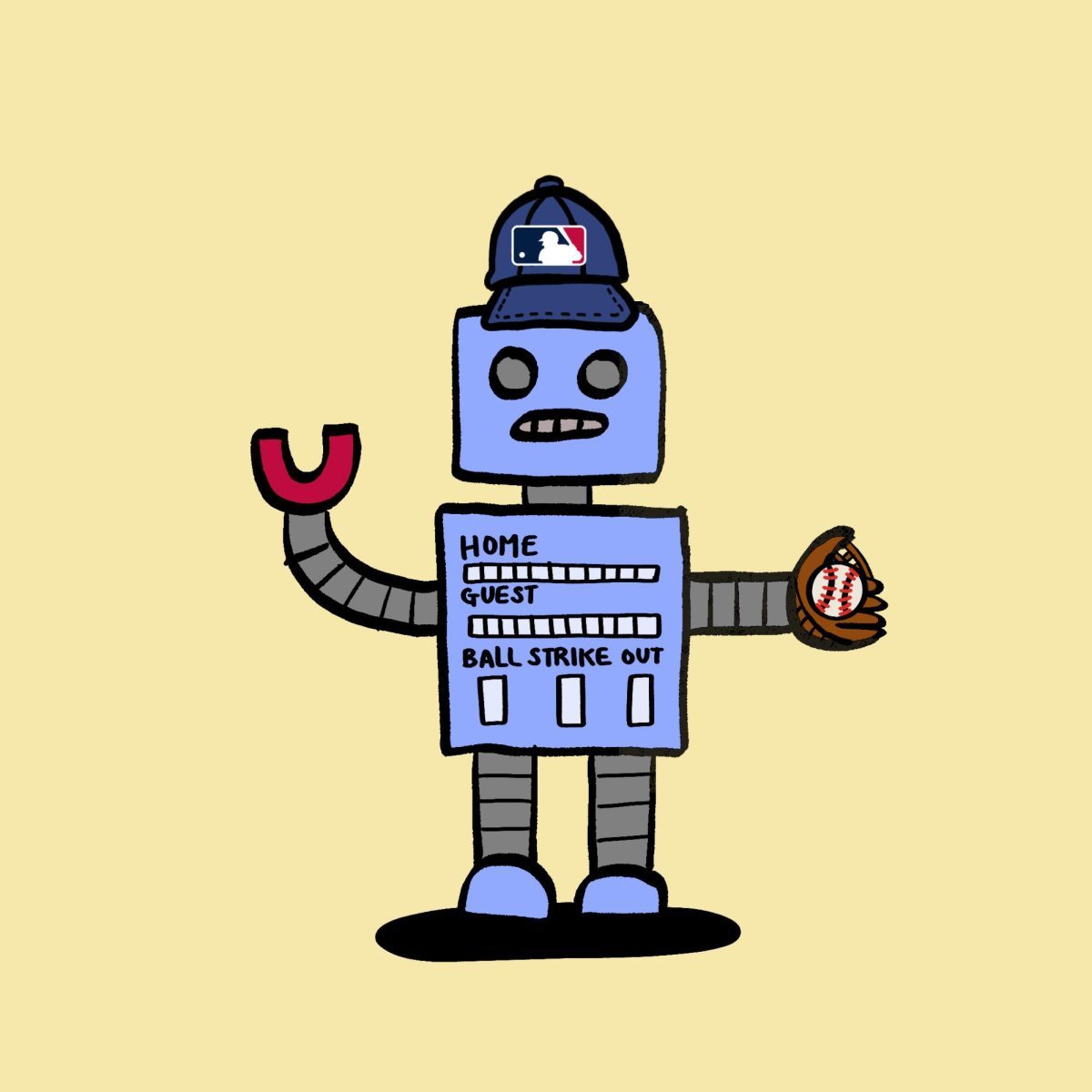
Aria Zhu
Major League Baseball has introduced a tennis-like system allowing players to challenge ball and strike calls for the 2026 season.
Happy Friday. By the time you read this, the New York Yankees will have hosted the Boston Red Sox in a three-game wild card series to open the Major League Baseball (MLB) postseason. It was either the best week or worst week of my life.
And unless Amtrak’s frequent maladies decide to ruin my Tuesday, I will have gone to Game 1 at Yankee Stadium. It was either the best night or worst night of my life.
You can figure out which if you see me around campus: Either I have a week-old pinstriped manicure or I have violently scrubbed it all off. I refuse to make predictions about this, because guess how that ended last year?
Instead, I’ll explain why I am — entirely unintentionally — a crystal ball on a completely disparate subject: umpires.
I wrote an April Fools’ Day column this past year breaking the news that Rob Manfred, MLB’s commissioner, introduced “UmpAIres” — robotic umpiring machines — into MLB. Hopefully, none of you believed me. If you did, check your ceiling: Did you know it says “gullible” on it?
But I was telling the truth; I was just early. On Sept. 23, MLB announced that they approved a challenge system for balls and strikes that employs robot umpires as the arbiters. While this change is not quite a full descent into automatic umpiring, it is certainly one of the more drastic changes to the game in recent years.
Quirks have always been a part of baseball — ridiculously vague balk rules, drastically varying ballpark dimensions and inevitable collapses by the New York Mets, to name a few. No longer will seemingly blind umpires be part of that list.
Now, teams will have two challenges per game. If a batter, pitcher or catcher believes the umpire made an incorrect call, they may challenge it by tapping their head. The Automatic Ball-Strike (ABS) system — that is the bland name for a robo-ump; can’t we call it Umpy-McUmpface or something less snooze-worthy? — will determine if the pitch was called correctly. A team retains its challenge in the event that the umpire’s call was deemed mistaken. If a game enters extra innings, additional challenges are allocated.
Unfortunately for the Houston Astros, receiving assistance or input from the dugout is not permitted.
I foresee the ABS system leading to frequent occurrences of my bolting upright and whacking my head in frustration that the Yankees aren’t challenging a clearly missed call.
More to the point, I also foresee that the value of a catcher will take a nosedive. Currently, catchers are valuable for two reasons: throwing out runners and framing pitches. Framing pitches is the art of tricking an umpire — catchers who can receive pitches in a way that makes balls appear to be strikes are worth millions of dollars. But the ABS system cannot be deceived in the same way.
I cannot imagine current and aspiring catchers are too thrilled about this impending change. However, nearly everyone else appears to be looking forward to it. Every MLB owner and the majority of players on the league’s competition committee — which decided whether to make the change — supported the immediate implementation of the ABS system. This decision came after Triple-A, the highest level of affiliated minor league baseball, successfully employed the system during the 2025 season.
Still, players will need to be judicious about demanding a challenge. During MLB spring training, when this system was tested out, teams that demanded a second look were successful just 52.2% of the time. That is essentially a coin flip with a decimal point attached. If I were a manager — hire me please, Yankees, I would be fantastic — I would allow only a select few of my sharpest-eyed players to make challenges save for egregious misses by the most incompetent umpires.
Speaking of sharp-eyed players, Benedict Arnold, also known as Juan Soto, is probably happy about his newfound opportunity to challenge a pitch. In all due fairness, he is one of the best in the game at distinguishing between balls and strikes. But he will have to celebrate from his $765 million couch.
Soto, after all, stands for ‘Sitting Out This October.’